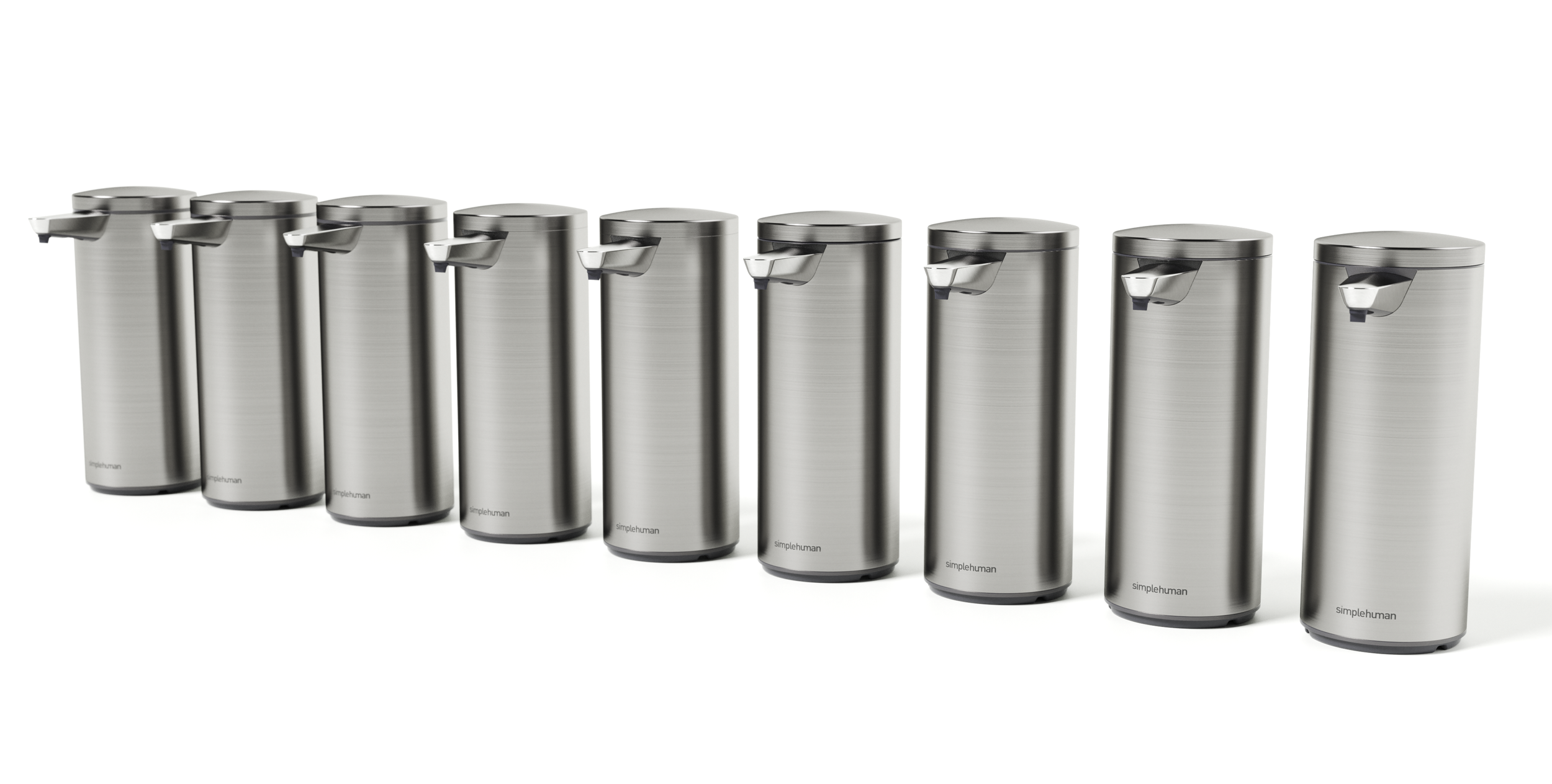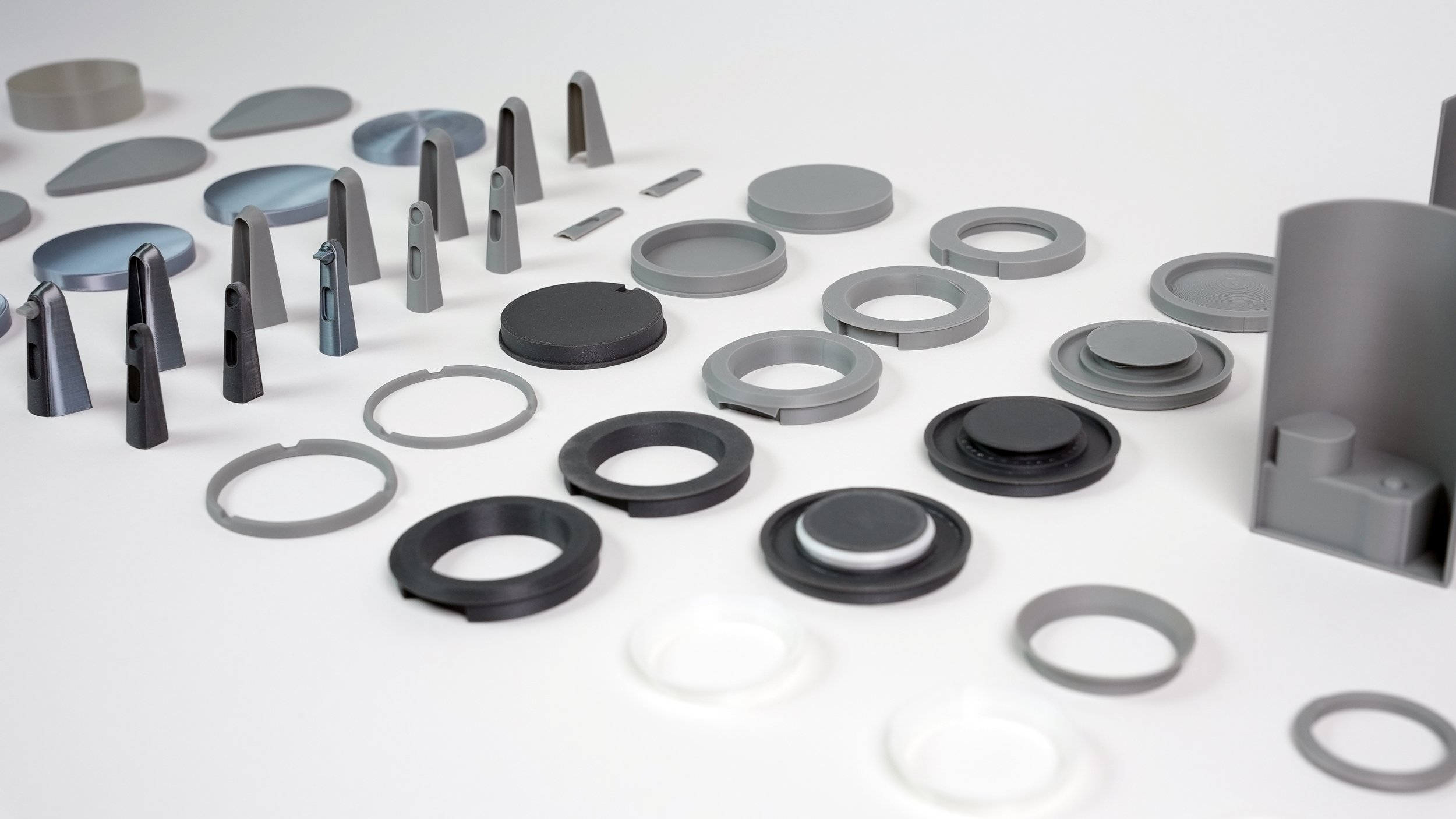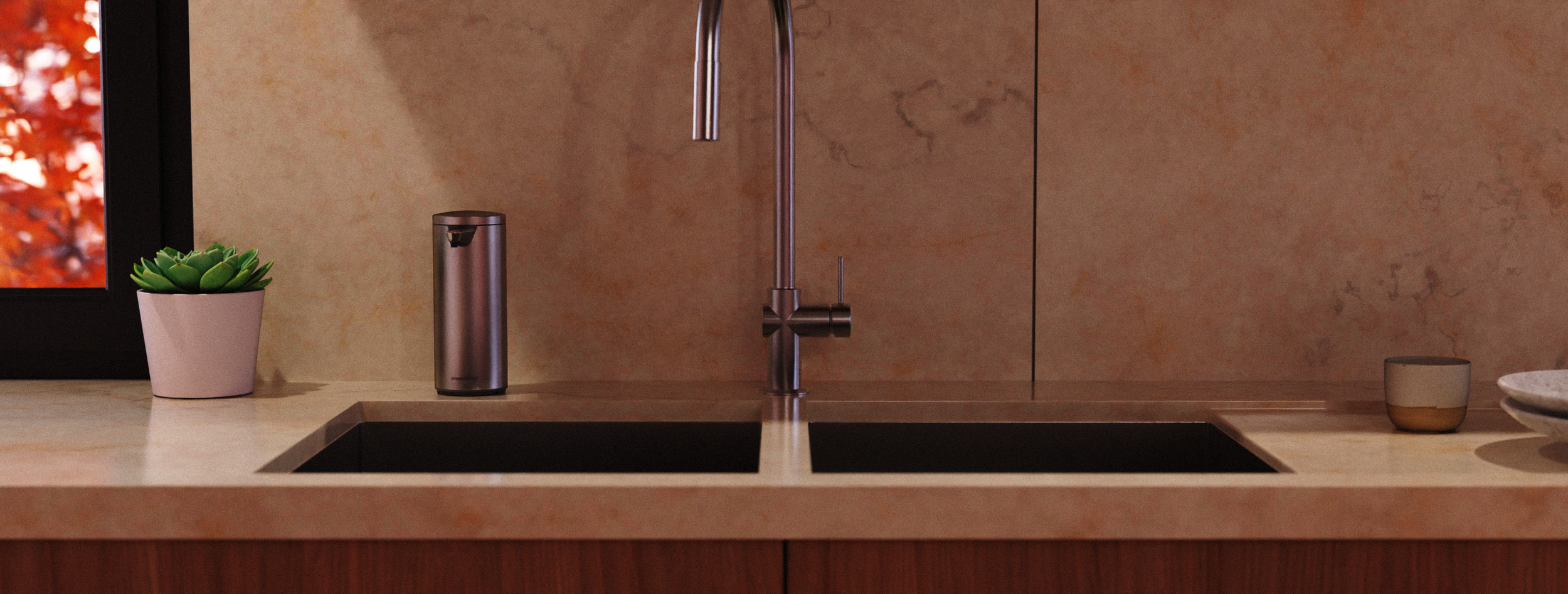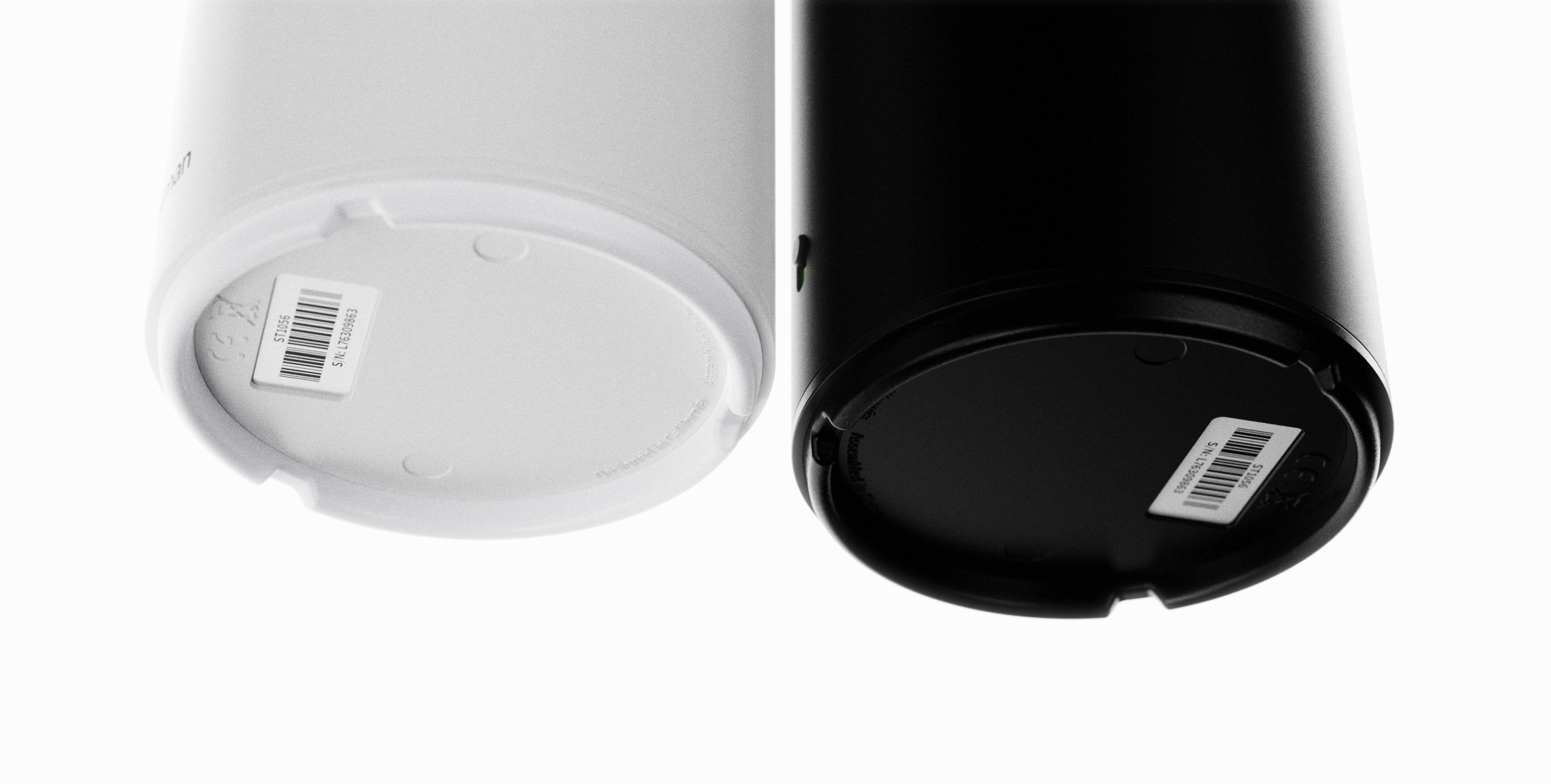
Simplehuman
Sensor Pump 9 - Vision
Automatic Soap Pump - Case Study
2024
Skills:
Industrial Design, Prototyping, CMF, UX, 3D Visualization
The Simplehuman Sensor Pump 9 has some minor pain points in quality and user experience which can be improved to yield a more premium and effective product.
Opportunity:
An improved version of the Sensor Pump 9, featuring better usability, performance, and considerations into manufacturing and CMF.
Design:
Simplehuman
I had the opportunity to visit Simplehuman’s headquarters in Torrance, California.
While I was there, I learned more about the company and gained some insight behind their products.
Key Values
Simplehuman is a company that is dedicated to making products that are built exceptionally well, have great user experience, and boast the performance to make everday tasks easier and more efficient.
They are constantly pursuing perfection, making iterative improvements to their products with every version they release.
Product Analysis
I’ve chosen to redesign Simplehuman’s Sensor Pump 9 liquid soap dispenser to improve it according to their values.
In order to gain more insight into the product, I purchased a number of Sensor Pump models to test and analyze.
Issues and Pain Points
Hard Water Stains
Since a soap dispenser is placed right next to a sink, it is always subject to drips and splashes. The flat top surfaces of the Sensor Pump do not shed water and allow water droplets to collect and pool together, leading to the formation of hard water stains once the water evaporates. This also occurs on the body of the Sensor Pump, as the silver ion coating is not very hydrophobic.
Being prone to getting dirty after only a short period of use degrades the perceived quality of the product.
Inconsistent CMF
The body of the Sensor Pump is brushed stainless steel and the lid is plastic that is PVD coated to imitate stainless steel. There is an inherent challenge in trying to closely match the CMF of the two parts being different materials.
This is especially apparent on the brass colorway.
Having mismatched CMF leads to an overall lower perceived build quality of the product.
Different Charging Solutions
The 9oz and 14oz models use two different chargers. The 14oz model uses a wireless induction charging pad while the 9oz model uses a smaller puck that makes a physical connection through pogo pins (newest 2024 model uses a revised version of this puck).
Having two different chargers for what is essentially the same product (just in different sizes) is a design inconsistency and can be annoying for users to keep track of.
Prone to Accidental Dispenses
Being cylindrically shaped, people instinctively want to grasp and pick up the unit like a can or bottle. The problem is that the IR proximity sensor is relatively close to the body and is pointed straight down, so it always accidentally dispenses soap by detecting fingers that are closely gripped around the body.
Process
Design Iterations
Since Simplehuman’s design language revolves around minimalistic geometric shapes, I chose not to redesign the body of the soap pump since its cylindrical form is already well optimized to their brand image.
Instead, I focused on redesigning some of the key details and features of the pump that would elevate its functionality, user experience, and quality.
Prototyping
All parts of multiple iterations of the Sensor Pump were rapidly prototyped to evaluate form, fit, and finish to closely represent the finished product.
Testing Hydrophobic Coatings
To explore the performance of possible coatings that could repel water better, I tested two automotive exterior treatments on a stainless steel panel.
Compared to the untreated control and the ceramic coating, the hard wax coating performed the best at repelling and shedding water droplets.
The Redesign
More than Waterproof
Beyond being IP67 waterproof rated, the top surfaces of the lid and spout have been improved with gently convex surfaces, not allowing water droplets to collect, sit, and pool together.
Water shedding is further enhanced by a hydrophobic ultra-hard wax coating applied to the stainless steel, so water droplets slide right off — goodbye hard water stains.
Matched CMF
The new lid is made from stamped stainless steel with a plastic insert. This allows for identical CMF matching between the lid and the body, creating a more premium feel and appearance.
The part separation gap between the lid and the body has also been minimized to give a sleeker form and prevent water from collecting in the gap.
Shinethrough LED
The indicator LED has been moved directly above the spout and shines through the plastic. This creates a cleaner, more minimal appearance, requires less parts, and is better for water resistance.
Adjusted Sensor
The location of the IR proximity sensor has been shifted forwards, closer to the nozzle. It has also been angled slightly forward.
This makes it better suited to sensing an incoming hand requesting soap and makes it not sense fingers that are grasping the body to move the unit, so no more accidental soap dispenses.
Unified Charging
The base internals of the Sensor Pump 9 has been changed to charge with the same charging pad used with the Sensor Pump 14.
The wireless induction charging pad is a more elegant and robust solution that is impervious to water and adds to the perceived quality of the product. Having the same charging solution across both soap pumps would also lead to greater user adoption of Simplehuman’s product ecosystem, as users don’t have to consider having to keep track of two different chargers.
Saves manufacturing costs, lessens inventory, performs better, and enhances user experience.
Repositioned Switch
Since the charging solution has been moved to the bottom; intuitively, the power switch has been shifted near the bottom of the unit as well. This consolidates most of the electronics to the base of the unit, making for simpler manufacturing and improving the center of gravity at the base of the unit.






















